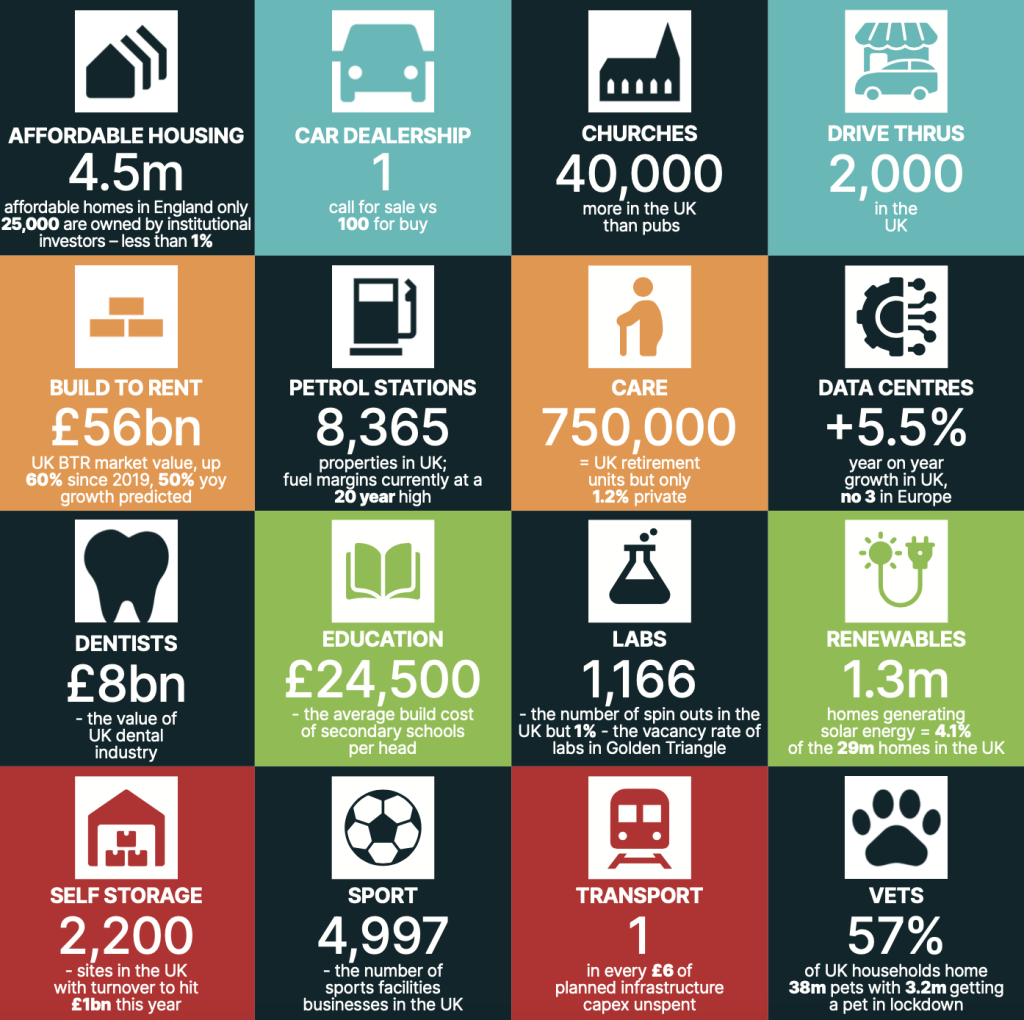- Residential fundamentals will always hold strong thanks to demand supply imbalance but less traditional residential will open up opportunities;
- Being open or flexible to niche forms of residential provide a safety net to diversify risk for landowners and developers;
- Better understanding at local authority level and planning reforms required to really accelerate opportunity for Care Homes, Affordable Housing and other ‘Living’ assets.
Residential is the most traditional of asset classes when it comes to real estate, but it’s the niche assets and sites within it that offer the most opportunity for investors and developers in 2024 onwards, leading Alternatives real estate adviser Rapleys says.
The strategic property consultancy’s Alternative Assets report (An Alternatives View) assesses performance, outlook, challenges and opportunities with themes and trends that traverse across various niche assets including the various strands of Residential such as Affordable Housing, Build to Rent (BTR) and Care Homes & Retirement.
Nick Fell, Partner and Head of Residential at Rapleys, said: “While these assets themselves aren’t new to the UK, our report shows that they have attracted rising levels of investor interest thanks to the huge opportunities these sectors offer. However, there are also niche challenges to tackle such as planning nuances, a lack of understanding when it comes to local authorities and communities and, of course, rising build costs and viability struggles. It’s really important that investors entering these markets, or seeking to optimise or de-risk their portfolio use a genuine expert with deep insight and experience to guide them through.”
Rapleys’ report highlights that there are currently over 4.5m Affordable Housing units in the UK but only 25,000 of these are owned by institutions, which equates to less than 1%. This represents a huge opportunity for the private sector to deliver quality accommodation at affordable levels and the last 12-24 months have seen a rise in the number of Registered Providers becoming ‘For Profit’. However, the sector is in desperate need of reform with a lack of incentives and regulators favouring ‘sticks’ over ‘carrots’, whilst Health & Safety concerns and decarbonisation has piled additional pressure on to viability on top of rising building costs and planning delays.
The BTR market swelled to £56bn in the UK by the end of 2023 but Single Family Housing is only now really getting traction with a number of new schemes consented throughout the South East, and rumblings of it hitting more regional cities like its multi-family parent. As renting becomes more ‘the norm’ for a wider array of people and even an ‘aspirational lifestyle choice’ for families and more diverse generations, Rapleys says the outlook is overwhelmingly positive. The sector also benefited from a post-Covid surge as people’s priorities became more focused on amenities, services, socialisation, security and wellbeing.
Another post Covid spike was seen in Care Homes, which fared badly during the pandemic news cycles. Despite an upturn in demand, and a wider choice of retirement living brands, out of 750,000 properties in this sector, only 1.2% were owned by the private sector and despite brands being keen to point their services to ‘active 65s and over’, the average age remained at 80.
A lower level of understanding at landowner and Local Authority level may also contribute to limiting opportunities and preventing interesting sites from coming forwards.
Tom Spencer, Partner and Head of Land Development Agency at Rapleys, adds: “An implicit understanding of different Residential submarkets can often determine a much wider array of what’s possible in terms of development on various sites, which in itself opens up much bigger opportunity for landowners and a greater chance of delivering for Local Authorities. It also means development can be less risky if flexibility is built into the scheme design – it becomes less impacted by market fluctuations. We would like to see more understanding of the different types of residential asset at local level and flexibility within the planning system to accommodate changes of use within residential for major schemes. By working with a specialist in this areas from the very beginning of the land process, landowners and developers can realise much more potential for their sites, driving more interest from an array of potential buyers and partners and, ultimately, having a greater chance of success of delivery.”
Rapleys’ report is available to download now and also includes analysis and insight into assets from across Automotive & Roadside, Retail & Leisure, Transport & Infrastructure, amongst others.


